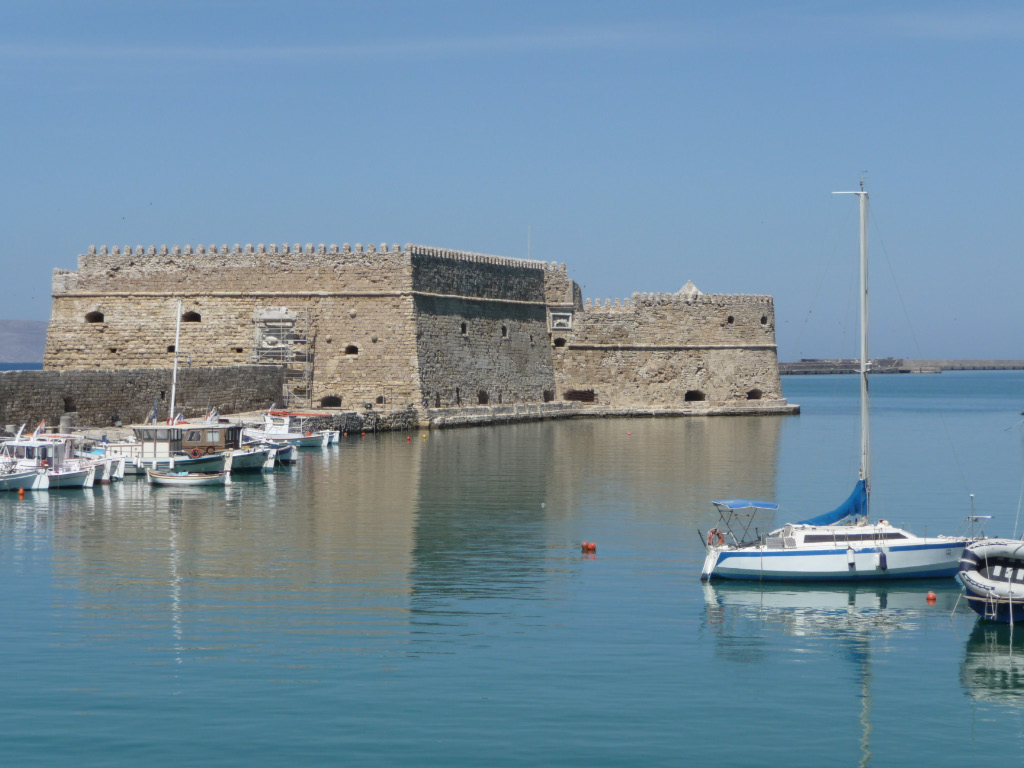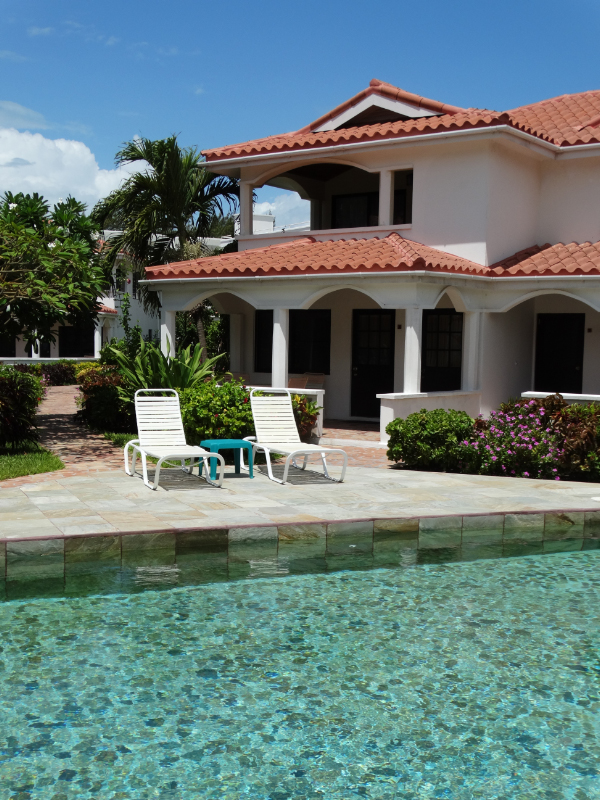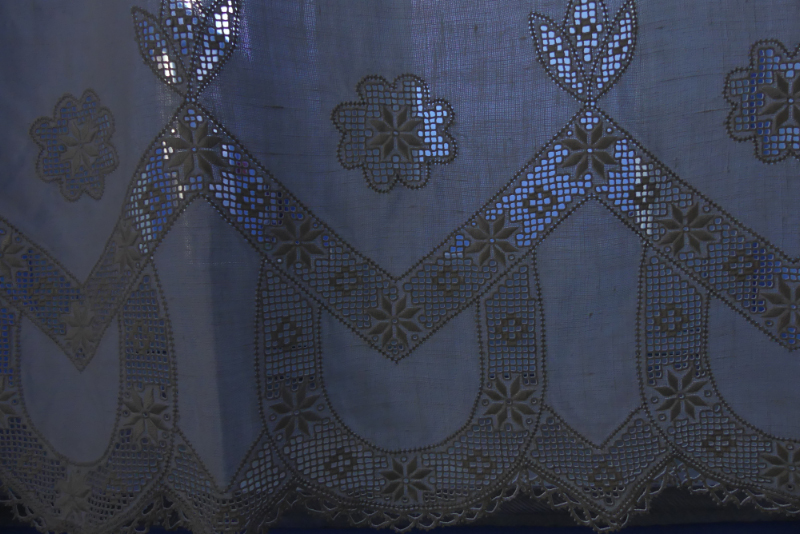Tuesday 12 to Saturday 16 December
It was a relatively easy flight from Montego Bay in Jamaica to Bogotá in Colombia, however we noticed a sudden change in temperature when we arrived.
Just 4° north of the equator but at 2,600m above sea level, this was the highest altitude we had struck on this trip, and the air was chilly. Clouds were constantly rolling by and we were dodging heavy rain showers most of the time.
The El Dorado International Airport is impressive, modern and functional. It has been named the best airport in South America by World Airport Awards.
The run in from the airport was equally impressive, along a straight motorway until we reached the old city where one-way streets twisted and turned.
Our small hotel was an old mansion and had been nicely decorated in greens and creams. The colonial style courtyard had rooms off to the front and the back of the building. Our room looked to the Our Lady of Guadeloupe statue on El Alto, the mountains that close the city’s eastern edge in.
We found ourselves confined to the La Candelaria quarter in Bogotá. Reception, police and the rather unhelpful tourist office all warned us not to step out of this area.
We had allowed a few days, but a distinct lack of tourist information meant that it was difficult to find day trips out of the city, so we spent our whole time in the ‘safe’ old city.
It gave us an opportunity to catch up with paperwork and photos and for me to continue building my new HP computer. Microsoft’s Windows always needs hours of updates on a new computer.
We also spent some time packaging and then sending my broken ASUS computer to Evan in New York. It’s hard to know what to do with a broken computer when you are miles from home. I didn’t have the heart to drop it down the stairwell and hope that destroyed the hard disc drive, that held so much personal information, and I certainly didn’t feel I could give it someone. At least with Evan, I would know the data on it wouldn’t be compromised.
Bogotá was vibrant and cheery. Preparations for the Christmas parade were well underway. Unfortunately, the main activities were scheduled to take place after we left. Hopefully we would find some Christmas cheer in other places.
We spent much of our time in and around the Simon Bolívar Square and the Cathedral of Colombia and Capilo del Sagrario, the Palacio de Justicia and the Capitolo Nacional buildings which surround it.
Decorations were being installed, soldiers were practising their marching parades and Christmas decorations and paraphernalia were on sale, especially colourful hats and scarves. It was, after all, cold.
There was a group practising climbing and walking on wires strung from the cathedral to the courthouse – they kept us entertained for hours.
Nativity scenes were displayed everywhere. The biggest and brightest was in the cathedral. The flowers in the churches were beautiful. It took some time for me to convince Bruce that the near perfect blooms were real. Fruit and veggies also looked excellent.
We had treated ourselves to a GoPro 5 as birthday/Christmas treat for the 2017/2018 season. Bruce used our free days to set it up and learn how the use it, culminating with a pigeon’s eye view of the square. We look forward to using it in tricky situations such as waterfalls and ice on our continuing journeys.
Our introduction to Colombian food came as quite a shock. On our first night we were lured into a typical Columbian restaurant close to the square. The plates of food we ordered were huge, with five proteins and three carbohydrates and half an enormous avocado, quite a challenge for us to digest.
Fortunately, we found food that fitted our appetites in later nights, one was at an interesting Japanese restaurant. Much to Bruce’s delight we also found a craft brewery pub – the Bogotá Brewing Company (BBC). It was a welcome change from the Jamaican and Colombian lagers, as Bruce was already having withdrawals from the massive variety of decent beers in the UK and USA.
One of our highlights was a visit to the Botero museum. Fernando Botero is a native of the city of Medellin in the Colombian Andes. His father died when he was just four years old, but he gained a scholarship to attend a Jesuit school at age 12. He was also briefly enrolled in a matador school, but discovered art instead. He was expelled from the school after complaints were made about the nude images he illustrated for a local newspaper.
As an untrained artist he was influenced by avant-garde intellectuals as well as Mexican muralists such as Diego Rivera, Josè Clemente Orozco and David Alfaro Siqueiros. He moved to Europe and studied the Spanish and French artists before returning to Latin America and experimenting with his own distinctive style of inflated people and objects.
In 2000 Botero donated artwork to a museum in Medellin and the Banco de la Republica museum in Bogotá. As well as 100 of his own art work, he included pieces from his private collection including works by Monet, Renoir, Degas, and Pissarro, four Picassos, and works by Dali, Miro, Chagall, Ernst, de Kooning, Klimt, Rauschenberg, Giacometti, and Calder.
It was a very satisfying exhibition, both of Botero’s works and of the artists that had influenced him.
We took the cable car to Montserrat. At 3152m above sea level, it dominates the city centre. The original church was built in the 17th century with a shrine, devoted to El Señor Caído The Fallen Lord. The hill was also considered sacred by the indigenous Muisca people.
But compared to its namesake in Barcelona, we thought this one lacked sincerity. Some Christmas decorations loosely styled on Botero’s style looked tacky. The Calvary way with its very serious statues was highly decorated with lights and illuminated cute animal figures. We understand it is an important place of pilgrimage but it didn’t strike us as seriously Christian.
Of course, the view over the city from the peak was amazing.
At the end of the tour we hailed a taxi to return to the hotel. Suddenly a policeman bailed us up and asked us where we were going. He pointed to a chart in the back of the taxi and showed us the maximum fare we would pay for our ride. Of course, the taxi driver wanted to charge more.
There is a huge police presence around the city. We met a policeman called Alexander. He was inviting us to visit the police museum. He looked young and explained it was his military service. You have an option to serve in the police force. He had finished school so was serving just one year. He wanted to study in Argentina and was also interested in travelling and visiting Australia. A lovely, articulate young man.
Coffee was good! We found a barista school/coffee shop which served a rich bitter blend. We returned often enough to be considered regulars for the few days we were in town.
One of the highlights of sightseeing in Bogotá is the graffiti. Perhaps as a sign of dissention against Colombia’s rather torrid past, and an attempt for the younger generation to express what they want for the city and for the country.
We certainly didn’t do Colombia justice but we enjoyed Bogotá and would encourage others to go and enjoy it for themselves.
And as we left the Christmas preparations in Bogotá we noticed that Santa’s helpers had already set up a special Christmas luggage trolley at the airport, waiting for that very important man-in-red to arrive.
e_header.jpg)




















































































